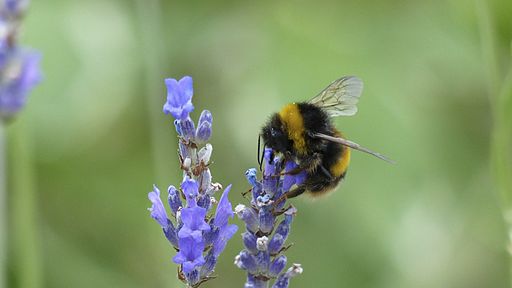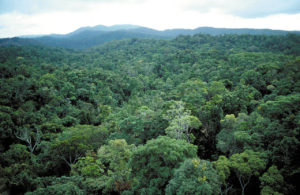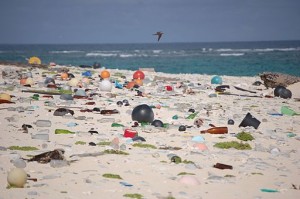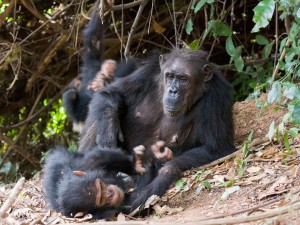Empathy for Insects
Entomologists are calling for greater research and science-based community actions to save insects. They say specific legislation is required to preserve the incredible diversity of insects, as well as addressing the huge gaps in our knowledge.
 Image: By Ian Kirk from Broadstone, Dorset, UK (Bumble Bee on Lavender Uploaded by tm) [CC BY 2.0 (http://creativecommons.org/licenses/by/2.0)], via Wikimedia Commons
Image: By Ian Kirk from Broadstone, Dorset, UK (Bumble Bee on Lavender Uploaded by tm) [CC BY 2.0 (http://creativecommons.org/licenses/by/2.0)], via Wikimedia Commons This year, German environmentalists collected 1.75 million signatures for a ‘save the bees’ law requiring an immediate transition toward organic farming. But to create healthy ecosystems worldwide, people in communities across the globe will need to take similar action based on empathy for insects, and not only for bees and butterflies. This is according to entomologists Yves Basset from the Smithsonian Tropical Research Institute and Greg Lamarre from the University of South Bohemia, writing in Science. The authors present immediate, science-based actions to mitigate insect decline.
Basset, who coordinates a project to monitor insects in nine countries as part of the ForestGEO research program at the Smithsonian, said: “What is new is the clear call to present our research in ways that everyone can understand it because communities need specific information to justify local political initiatives. It takes specific legislation to preserve the amazing variety of insects in the world and the critical services they provide by stopping the destruction of natural habitats, limiting road building in parks and reserves and producing food without the use of pesticides. Conserving insects is not the same as conserving big mammals or rare frogs. You can’t keep millions of insects in a zoo.”
Previous research suggests that successful programmes to save insects have a clear and simple objective and a strategically chosen audience. By focusing on bees and butterflies and other beautiful, familiar insects, it is possible to enact legislation to protect the habitat of lesser known, less attractive, but equally important species.
However, there are still huge gaps in information about how different species of insects are doing. When people refer to global insect declines, there is very limited information from the tropics where the majority of all insect species live. Even in temperate areas, where insect declines are reasonably well documented, some pest species are on the rise.
“It is next to useless to weigh insects collected in an area and say that insect communities are increasing or declining. We need much more specific information. That is expensive and we are also hindered by the effort that it takes just to identify the species, especially in the tropics. What we are doing now is to group insects by their main function: pollinators, decomposers, predators on other insect species, and then to determine how each group is doing in a specific area of the world,” explains Basset.
For example, some of the top predators of insects are other insects. When we eliminate these species it may result in a population explosion of smaller insects, some of which carry dangerous diseases: more insect biomass does not necessarily mean that we are protecting insect diversity.
Basset published a paper in 2017 showing that the response of butterflies to environmental change was very different from the response of termites. This illustrates the need to study insects as distinct entities, each with different ecological requirements and exposed to different threats.
Also, much of the data on insect populations is from reserves far from pesticide use and habitat destruction, thus the article calls for more research on tropical insects.
“Barro Colorado Island, the Smithsonian research station in Panama’s tropical forest, is only about 15km2 and there are more than 600 butterfly species,” Basset said. “We can only tell you if about 100 of them are declining. For the rest, we simply have no data. In the tropics, insects outnumber mammals 300 to one. High-ranking scientific journals would publish a graph of jaguar decline, but not 300 graphs showing declines of obscure insect species.”





Sorry, comments are closed on this post